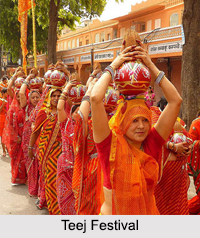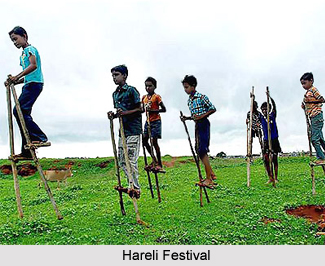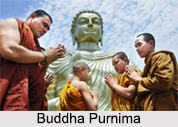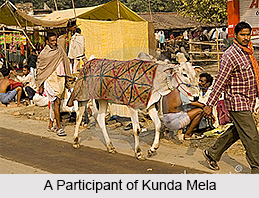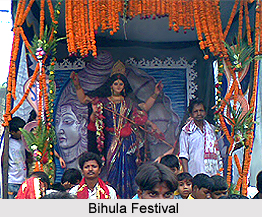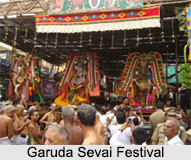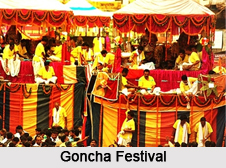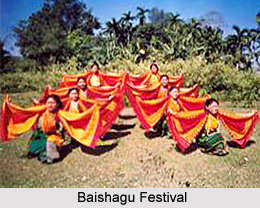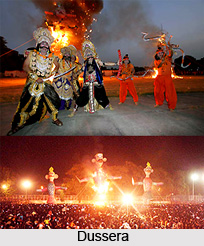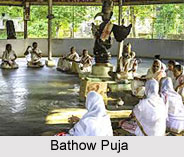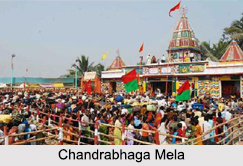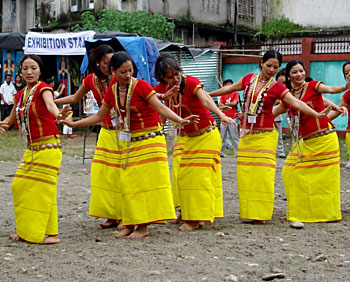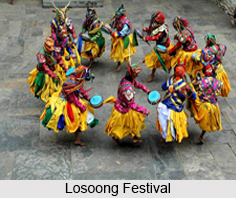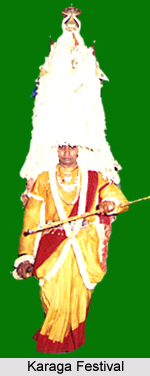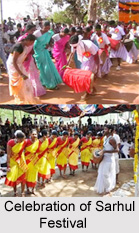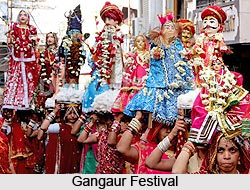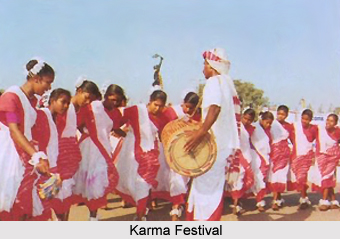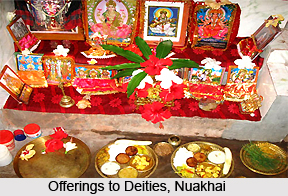 Nuakhai festival is a famous agricultural festival which is also known as `Nuankhai` celebrated by the residents of the western part of Odisha, to mark the commencement of a brand new rice cultivating season. It is observed during the day of `panchami tithi` or the fifth day of the lunar fortnight of Bhadrapada or `Bhadra` month which constitutes the period from August till September, as per Hindu calendar. Various immigrants belonging to Odisha who currently inhabit Kolkata, Delhi, Mumbai, Hyderabad, Chennai, Goa, Chennai, Bangalore and Vishakhapatnam have been observing this festival with pomp and glory since several years. Nowadays, Nuakhai festival is celebrated on the fifth day of the second fortnight of `Bhadrava` and was largely supported by the Odisha Government in the year 1991. Aspects of Sambalpuri culture and society are portrayed through this festival. Some of the most famous Nuakhai celebrations include Nuapada District, Sundargarh, Kalahandi, Sonepur, Bargarh, Sambalpur, Jharsuguda, Boudh and Balangir District.
Nuakhai festival is a famous agricultural festival which is also known as `Nuankhai` celebrated by the residents of the western part of Odisha, to mark the commencement of a brand new rice cultivating season. It is observed during the day of `panchami tithi` or the fifth day of the lunar fortnight of Bhadrapada or `Bhadra` month which constitutes the period from August till September, as per Hindu calendar. Various immigrants belonging to Odisha who currently inhabit Kolkata, Delhi, Mumbai, Hyderabad, Chennai, Goa, Chennai, Bangalore and Vishakhapatnam have been observing this festival with pomp and glory since several years. Nowadays, Nuakhai festival is celebrated on the fifth day of the second fortnight of `Bhadrava` and was largely supported by the Odisha Government in the year 1991. Aspects of Sambalpuri culture and society are portrayed through this festival. Some of the most famous Nuakhai celebrations include Nuapada District, Sundargarh, Kalahandi, Sonepur, Bargarh, Sambalpur, Jharsuguda, Boudh and Balangir District.
Nuakhai Festival is also referred to as `Nuakahi Bhetghat` or `Nuakhai Parab`, and the word `nua` implies new and `khai` means food. It is observed just the day after Ganesh Chaturthi and is quite significant for farmers. The auspicious time of the day which marks the celebration of Nuakhai is known as `lagan`, and one of its special feature is the preparation of the `Arisa Pitha`. During the lagan, the village deities are worshipped prior to observing the Nuakhai.
History of Nuakhai Festival
The origin of Nuakhai dates back to the Vedic Age during which period the ancient Indian saints mentioned about `panchayajna`, a ritualistic agricultural activity comprising five different rituals. These five activities involve ploughing of the land or `sitayajna`, dispersing of seeds or `pravapana yajna`, cutting of crops or `pralambana yajna`, harvesting of grains or `khala yajna` and finally the conservation and protection of the agricultural produce or `prayayana yajna`. Nuakhai has evolved from pralambana yajna which implies cutting of the first crop of the season and offering it before the Mother Goddess.
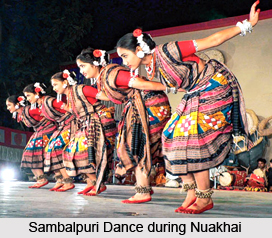
Historical sources claim that Nuakhai was observed since the 12th century AD, during the reign of the Chauhan Raja Ramai Deo who had founded the state of Patna. This part of the nation presently belongs to Balangir District, western Odisha. The ruler Raja Ramai Deo gradually grasped the significance of an organised farming system in his empire mainly due to the fact that his land was an agricultural economy wherein his subjects were mostly hunters and food gatherings. He discovered that surplus crops were important for the prosperity of the state. Ever since that time, Ramai Deo started celebrating Nuakhai festival in Sambalpuri region in order to motivate people to invest in the field of sustainable agriculture.
In olden days, there existed no specific day for its celebration and was conducted in `Bhadraba Sukla Pakhya`, when Kharif crops began to ripen. The food-grains are offered to the village deity prior to it being pecked at by birds or animals. Nuakhai was observed on the day suggested by the village priest. Later, Nuakhai transformed into a major socio-religious event in the Kosal area or western Odisha.
Rituals of Nuakhai Festival
The preparations of Nuakhai festival commence about 15 days before the actual date of Nuakhai festival and the elderly villagers assemble together at a sacred area after calling the other villagers by the blowing of a trumpet, done by a `beheren`. The `tithi` and lagna of Nuakhai are discussed and decided amongst the people after consultations with the village priest who reads the `panjika` or astrological almanac and declares the `muhurta` or the time period which consists of 48 minutes. Muhurta means the time of taking of the `nua`. Thereaftter, the festival is characterised by characteristics of Hinduism as well as the original tribal festival. Following the migration of the caste-Hindus into the region, the regional tribals started embracing the scientific calculation of the lagna and tithi for the Nuakhai festival. While Nuakhai was adapted by the Hindus from the tribals, certain Sanskritic elements were imbibed into it to make it more agreeable to the caste-Hindus.
The Odisha State Government declared the day of Nuakhai festival as an official holiday, meaning the day of Bhadraba Sukla Panchami tithi, which was finally decided to be the day of celebration of Nuakhai since the year 1991. Nuakhai festival is celebrated as domestic and also community levels. The initial rituals are performed at the temple of the village deity and then prayers are offered to the village deity and also Goddess Lakshmi in the residences of the villagers. People are adorned in new attires and the eldest family members distribute nua to the other members of the family. The younger family members offer their reverences to their elders after receiving the nua. It is followed by the `nuakhai juhar`, which is characterized by the interchange of greetings with relatives, friends and well-wishers. This ritual signifies the element of unity. Nuakhai Juhar is wished to the elderly members of the family who bless the junior with blessings of a long, healthy and prosperous life. Folk songs and folk dances are arranged in the evening which is termed as `Nuakhai Bheghat`. People indulge in numerous Sambalpuri dances which include `Bajnia`, `Dalkhai`, `Sajani`, `Nachnia`, `Chutkuchuta`, `Rasarkeli` and `Maelajada`.
The tribes of Pahari Kharia and Dudh Kharia celebrate the `Jeth Nawakhai`, Birjia and Oraon observe `Nawakhani`, Birjia and Munda celebrate the `Jom Nawa`, Santhals celebrate `Janther` or `Baihar-Horo Nawai`, tribes of Ranchi celebrate `Gondli Nawakhani`, Birjia celebrate `Nawa`, Birhors celebrate the `Nawa Jom`, Korwa observe `Dhan Nawakhani`, Parajas celebrate the `Nawakhani`, etc. In the coastal districts of Odisha and
